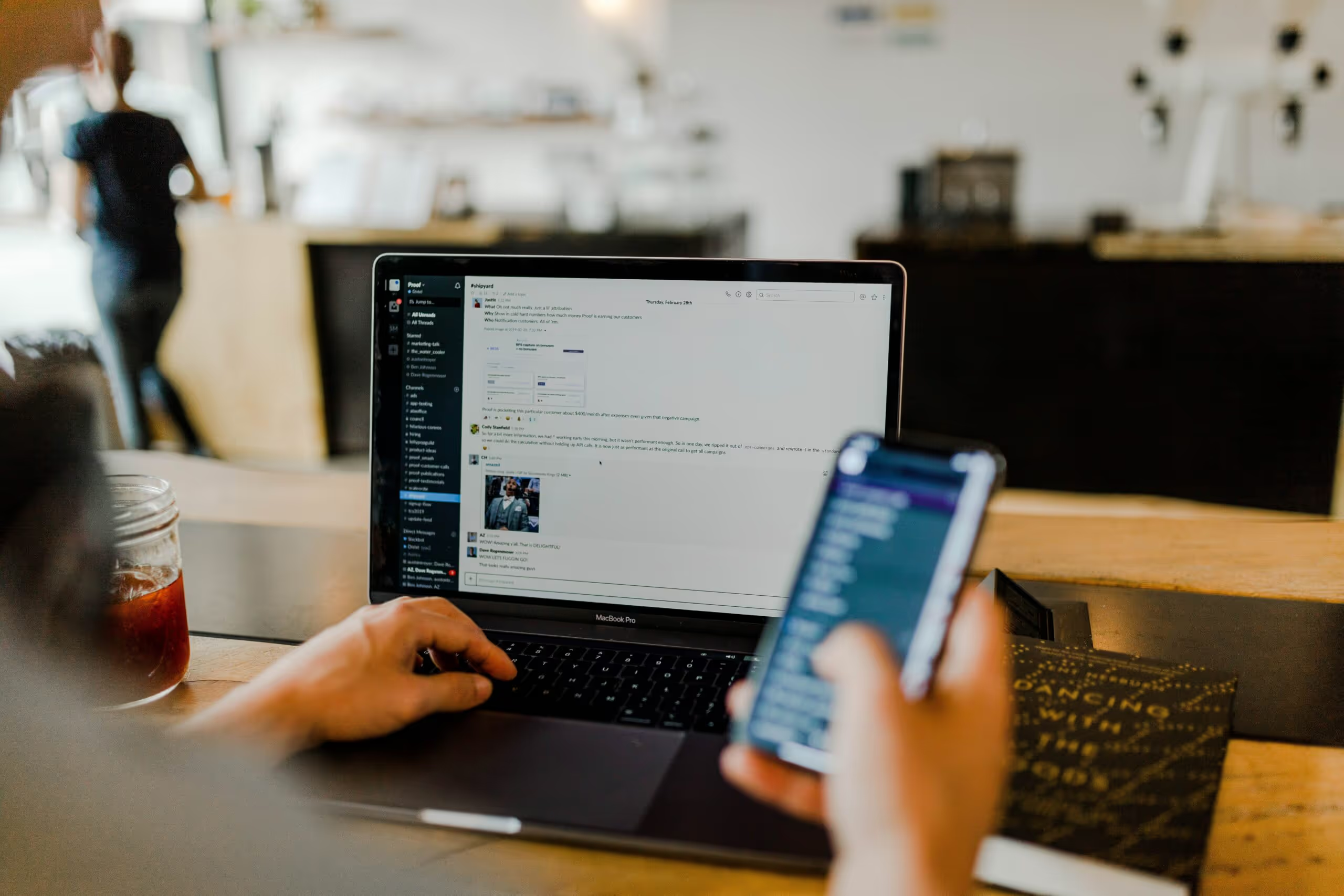Increasing personal influence for organizational effectiveness

Related content

Client need
Advancements in autonomous vehicle technology and the rise of the sharing economy have sparked unique, high-growth opportunities within the insurance sector. As rideshare services and last-mile delivery become more popular, the demand for commercial mobility insurance has surged. Recognizing this potential, a leading insurance provider—historically successful in personal insurance for homes and vehicles—identified a strategic opportunity to expand into the commercial mobility market.
However, this shift came with its own set of challenges. To pursue this new market successfully, the company needed leaders who could not only envision the future but also execute on a strategy that balanced this emerging opportunity with the existing demands of the business. Leaders needed to be prepared to make informed, strategic decisions, guide their teams through change, and maximize resources to drive growth on both fronts.
Solution
To bridge this gap, the organization turned to BTS. Having invested heavily in talent development, the client sought an innovative capstone experience to equip executives with the skills to navigate the complexities of commercial and personal mobility insurance. This experience would combine traditional learning with immersive, hands-on practice to prepare leaders to operate in a dual-focus business landscape.
BTS collaborated closely with the client’s key stakeholders to build on an existing custom business simulation tailored to the company’s unique challenges and growth goals. Through interviews and deep dives into the client’s strategy, BTS crafted realistic scenarios that mirrored the critical decisions leaders would encounter as they pursued this new strategic direction. The aim was to ensure leaders experienced the trade-offs, resource allocation challenges, and leadership decisions required to achieve success in both the traditional and commercial mobility sectors.
The result was a dynamic, three-day virtual capstone event, where executives from diverse geographies and functions came together to compete in teams, simulating the operations of a combined personal and commercial mobility insurance company. Each team faced real-time decision points—balancing the needs of the established personal insurance business with the growth demands of the commercial mobility segment.
Throughout the simulation, BTS facilitators, along with senior leaders from the client’s organization, guided teams through reflective debriefs, helping participants unpack the impact of their choices, understand their strategic missteps, and explore the lessons needed to adjust. This design offered leaders an active role in both learning and execution, helping them see how each decision could drive or hinder the company’s broader vision.
The experience allowed participants to connect their day-to-day responsibilities with the organization’s growth objectives in ways they had never seen before. Leaders could see firsthand how their decisions affected different areas of the business, revealing the immediate consequences of missteps or successes. Winning the simulation required not only protecting the existing business but also achieving substantial growth in the new commercial mobility space—driving home the importance of the company’s strategic pivot.
Results
This capstone simulation was hailed as the highlight of the company’s nine-month executive development program, providing leaders with a transformative experience that changed the way they viewed strategy, decision-making, and cross-functional alignment. Following the simulation, a survey of participants in the first cohort revealed the program’s profound impact:
- 79% of participants reported a deeper understanding and appreciation for crafting an effective strategy.
- 74% gained valuable insights into customer segmentation and its role in targeting diverse markets.
- 85% appreciated the interconnectivity of various business decisions, better understanding the ripple effects across the company.
- 79% recognized the power of diverse perspectives, noting that collaborating with peers from different backgrounds enriched their strategic thinking.
- 74% left with a broader understanding of the business and its complexities.
Testimonials
“Though intensive, this simulation was exactly what I needed. It helped me see how the entire business fits together. I feel more confident in making decisions that consider the bigger picture.” — Participant
“This experience brought to life the complexity and interdependency within our business. I now have a much stronger grasp on finance for insurance, and I feel more aligned with our CFO’s perspective on the company’s financial health.” — Participant
“We always hear that decisions impact the entire business, but seeing that impact in real time was eye-opening. The simulation taught me that failure can be a powerful learning tool. Leaders need to take calculated risks, learn from setbacks, and push forward. I feel more prepared to step out of my comfort zone.” — Participant
Through this immersive capstone, leaders not only understood the organization’s strategic shift—they practiced executing it. The company now has a team of executives ready to lead in the fast-evolving commercial mobility market, equipped with the insights and confidence to drive sustained growth and innovation.

Client need
A global professional services firm delivering risk advisory and insurance solutions to companies, institutions, and individuals was undergoing a strategic transformation to accelerate growth, increase operational efficiency, and prepare for the future. To succeed, this transformation would require investments to streamline processes and platforms, along with a shift in how people work. To improve operations, the organization had already segmented the business and reduced layers, attempting to drive simplicity, transparency, and distributed decision making across the firm. However, adapting to the new operating model would require systemic change.
The organization’s chief human resources officer (CHRO) engaged BTS to help jumpstart the strategic transformation. BTS collaborated with the organization to create a program that would align the broader leadership team, comprised of everyone below the executive committee, to this transformation. The goals of the program was to help leaders translate the new strategy into something meaningful and actionable at their departmental level, and also to catalyze the broader leadership team’s strategy execution.
BTS created a highly contextualized business simulation, including presentations, facilitated discussions, and focused training, all of which were customized for the organization.
Solution
BTS began the design process by interviewing 18 senior executives across the organization. These senior executives included the CEO, COO, CHRO, and presidents of regional divisions. They were selected to provide a broad representation of and perspective on the organization. The goal of this research was to define two broad topic areas:
The Business – understanding the organization's business model, the markets in which it operates, and the unique challenges and opportunities it faces.
The People and Leadership – understanding the behavioral and mindset shifts the organization wanted to see in its people, leadership, and culture.
Following the interviews with top-level executives, BTS conducted eight additional interviews with mid-level executives. This allowed for insight into specific business units and challenges referenced in the previous set of interviews.
Interview responses were distilled into a list of themes and organized into an “impact map.” The map defined the business impact envisioned by the organization and linked it to the knowledge, skills, behaviors, and mindsets the organization sought to foster.
The organization’s steering committee reviewed the impact map with the goal of gaining alignment on their key challenges, desired behavioral shifts, and key business results.
To achieve these behavioral shifts, the company collaborated with BTS to design a business simulation modeled after the company’s business. The simulation created a risk-free, engaging, and fun way to achieve learning objectives, and was composed of three rounds experienced over a two-day program. Each round had a theme with distinct learning points.
Round one was designed for leaders to learn how to optimize today’s business in service of driving long-term profitable growth. This involved gaining an understanding of the business landscape, as well as familiarity with the decisions and trade-offs that such growth requires. Round Two focused on the client, becoming a strategic advisor to clients, and enhancing leaders’ abilities to execute. Round Three prepared leaders for a future of making long-term investments in order to develop a sustainable competitive advantage.
Leaders were divided into teams of five at the beginning of the program. Each team included participants from a diverse array of functional and geographic sections of the organization. The experience was composed of seven main elements:
- Pre-Work and Introduction – Participants received a pre-start date reading assignment: a detailed case study featuring a fictitious company in a fictitious market environment. The company and market environment described were very similar to the organization and its environment. BTS facilitators kicked off the program by making a case for change, highlighting shifts in the market environment. Participants then broke off into pairs to reflect on those shifts and discuss what the changes meant for them as leaders. Then, BTS facilitators led a discussion wherein participants shared their reflections with the entire group.
- Strategy Session – In teams of five, leaders came up with a strategy for how they would lead the simulated company.
- Running the company - In their teams of five, leaders ran their simulated company by making over fifty critical decisions. Each team had their own designated breakout room where they would debate their decisions and enter them into a live digital-simulation platform. Periodically, teams would receive a “Wobbler,” which was an unexpected event that they had to respond to in real time (usually a competitor action, a client issue, or a talent issue). Their decisions impacted their KPIs and market share for each market and segment. Participants “ran the company” for three rounds, which represented a three-year timeframe.
- Know-Hows – After each round of running the company, participants came back to the main room for a teach-piece or “know-how,” which were skill or knowledge gaps identified as needing to be addressed. After Round One, the topic was “effective decision-making.” For Round Two, it was “future-proofing.” Round Three’s topic was “feedback culture.”
- Debriefs — With the entire group present, BTS facilitators reviewed the results for each team, linking the decisions that teams made to their performance. Each of the three rounds had a theme, and facilitators emphasized key takeaways related to these themes. At the end of each debrief, facilitators revealed where teams ranked against each other. Participants also received a report showing their team’s annual financial performance, along with another that summarized the competing teams’ performance.
- Application Session – During these sessions, participants committed to post-program actions, recording them using an electronic tool. Following the completion of the program, participants received follow-up reminders of their commitments at a scheduled cadence.
- Reflection Sessions — Solo reflections and team reflections were interspersed throughout the two-day program. During the solo reflections, which followed the know-how sessions and debriefs, participants reflected on what they had learned. After the “running the business” segments, participants reflected on their team dynamics. At the end of each day, BTS facilitated short discussions during which participants would share their reflections with the larger group.
To date, ten cohorts have gone through the program since its launch. Each cohort had 25 participants, all just below the C-suite.
At least ten more cohorts, each with a similar number of participants, plan to attend the program next year.
Results
Overall, the program was a great success. The CEO of the Italy division of the company concluded that the BTS program was “much better than any other session of its kind.” The CHRO and the executive team were enamored, and continued to communicate this in subsequent discussions. The organization also extended the original agreement to roll out even more programs.
In the application session section of the program, participants were asked to choose and commit to post-program actions related to on-the-job behaviors. Most frequently, they committed to actions around making informed decisions, prioritizing growth opportunities, and focusing on client relationships. These actions were aligned with the changes that the organization set out to make:
72% of participants stated or planned to have “tough conversations with colleagues about performance and/or with leaders about the business.”
74% of participants stated or planned to “focus on the broader client relationship and anywhere else you can solve risk for the client and align our value proposition.”
54% of participants stated or planned to “prioritize talent development, grow from within, and recruit externally when appropriate.”
Participant testimonials
“I thought this was the best training I’ve ever done. The learning from our team interactions was very illuminating. I loved the risk storming / pre-mortem methodology.”
“It was very useful for me, very genuine, and corresponded with reality. It was entertaining as well.”
“The simulation exercise was an outstanding learning tool. I would be very disappointed never to experience a similar exercise again AND would recommend that our company regularly use the software to measure learning.”
“The simulator tool was very comprehensive and intuitive. Enjoyed the cadence of mixing up sim time and organizational behavior group sessions in different teams. The feedback session was very useful. Excellent team of facilitators.”

Client need
A global multinational pharmaceutical company was at a critical juncture with the appointment of a new CEO. This leadership change spurred a broader effort to reassess and redefine leadership expectations, aiming to improve operations across the organization. The company sought to evaluate its leaders against these new operational standards and identify strengths and gaps in the organization.
Solution
The company partnered with BTS to design and implement bespoke 360-assessments for 1,800 senior leaders and 180-assessments for 9,100 people managers with three or more direct reports. These assessments were strategically developed to provide insights at both an individual and global level, thereby aligning leadership performance with the newly articulated corporate goals.
Results
The initial rollout of the 360-assessment involved approximately 1,800 leaders globally, including 700 executive directors or higher. The success of this phase led to the program's institutionalization, with the CEO endorsing its annual continuation to support end-of-year performance reviews and broader leadership development.
Encouraged by the results, the company expanded the initiative to include a 180-assessment, reaching an additional 9,100 people managers. This broader assessment effort cascaded the leadership development strategy down through the managerial ranks, reinforcing the company's commitment to fostering an inclusive and effective leadership culture.
The insights gained from these assessments enabled the company to identify where development efforts should be focused, ensuring that leadership across the company is well-equipped to drive future growth and innovation.
Related content

Client need
Safety in the transportation industry has often been treated as a set of rules to follow and boxes to check. But one Spanish railway organization saw an opportunity to redefine safety as something far greater, a core value embedded into the culture of their company at every level.
This bold vision demanded more than compliance. It required a cultural transformation to challenge outdated behaviors, inspire teams, and empower leaders to embrace and model a safety-first mindset. For years, the organization had been working to foster a culture that prioritized protection over profit, setting new behavioral standards across the industry.
To accelerate this shift, the organization partnered with BTS to design a leadership development program that dismantled old practices and equipped leaders with the tools, insights, and behaviors needed to bring their vision to life.
- Deconstruct existing mindsets to enable cohesive change.
- Identify barriers preventing progress.
- Equip leaders with practical behavioral knowledge and tools.
Solution
BTS partnered with the organization to design a leadership journey that would reshape not just processes but perspectives, fostering a workplace where physical and psychological safety were paramount. Over eight months, the project team conducted interviews with leaders and focus groups to uncover critical behavioral insights and tailor the program to the organization’s unique needs.
Participants explored essential themes, including:
- Embedding safety into daily decision-making.
- Cultivating greater awareness of safety risks.
- Understanding the influence of their leadership on safety outcomes.
- Leading by example to set a cultural standard.
- Building trust, commitment, and open communication within their teams.
The program unfolded in three distinct phases to drive lasting behavioral change:
- Workshop preparation
Participants began with a self-assessment to uncover personal “safety blind spots” and mind traps. This phase, delivered through a custom online platform, helped leaders reflect on their current practices and prepare for the transformational journey ahead.
- Safety workshop
The one-day, immersive workshop was designed to spark deep conversations about safety culture, challenge ingrained mindsets, and equip participants with actionable strategies for change. Leaders engaged in real-world scenarios to explore the implications of their decisions and practice new behaviors. The day concluded with collaborative debrief sessions, leaving participants with practical tools to implement their insights immediately. - Implementation in action
To sustain momentum, the post-workshop phase extended over six months, offering six targeted activities. These activities reinforced key lessons, encouraged team collaboration, and provided ongoing support for integrating safety-first behaviors into daily routines.
The leadership program was delivered to 1500 participants over 66 workshops in seven locations across Spain.
Results
To measure results, the project team created a resource map evaluating progress.
Average completion rate of Activities One–Three: 57 percent. (One: 78.21%; Two: 53. 01%; Three: 40.57%)
A post-workshop survey was sent to participants, reporting on the following metrics:
- Average satisfaction — 4.7/5.
- Trainer’s evaluation — 4.9/5.
- NPS — 82 percent.
- “Saw improvement in safety alignment” — 93 percent.
- “Integrated safety tools in daily roles” — 82 percent.
- “Identified new initiatives for improving safety” — 77 percent.
- “Mitigated team/peer mind traps” — 93 percent.
- “More aware of risk in daily roles” — 98 percent.
- “Identified a normalized risk to work on” — 92 percent.
Testimonials
- “Many of the methodologies and tools not only help to improve safety but can also be used to improve operational or organizational processes.”
- “It has put us in front of the mirror of how we are today in terms of safety culture, opening our eyes to our development areas. Very participative and practical.”

Over the years, BTS has expanded its global footprint through thoughtful acquisitions and collaborations, bringing new creative capabilities and local expertise into the fold. From digital design studios to leadership consultancies across Europe, Asia, and the Americas, we’ve built a community that blends shared values with local perspective. That diversity has become one of our greatest strengths, shaping how we design and deliver learning that feels deeply personal everywhere we work.
Whether someone is in a leadership journey in Singapore, a coaching program in São Paulo, or a strategy workshop in Stockholm, the goal is always the same: to make the experience feel like it was made just for them.
Many of those experiences live on Momenta, BTS’s digital experience platform, powering journeys like Coaching, Multipliers, and other core programs.
As those experiences grew, so did the need for nuance. Every journey had to feel local, not just sound translated. Tone, humor, and cultural context have always been central to the BTS approach, and as demand expanded across formats and regions, our translation model was ready for its next evolution.
In early 2024, the team began exploring how AI could help. Rather than treating technology as the destination, we saw it as a catalyst, a way to rethink translation and deliver richer, more customized client experiences at scale. That curiosity sparked one of BTS’s most ambitious AI-first experiments, led by our Global Product Enablement Function team in partnership with our global network of linguists and translators.
Shifting to AI-first
The next step was finding the right place to experiment. Enter Phrase, a cloud-based translation management platform that quickly became our test lab. Phrase brings every part of the translation process into one place, from machine translation engines to human review, terminology management, and workflow tracking. It gives our linguists, designers, and project teams a shared space to collaborate, test ideas, and learn.
Over the next few months, two key discoveries reshaped how we think about translation, and ultimately, how we work.
Key discovery 1: Making AI a teammate
We began with a clear goal: make translation faster and more consistent. Using Phrase, AI handled the first drafts while our linguists refined them. Quickly, we realized there was potential for AI-value that went far beyond speed.
With AI completing the first 80% of the work in a fraction of the time, our linguists could focus on what matters most: nuance, tone, and cultural resonance. The relationship evolved from oversight to collaboration, AI structured and scaled, humans shaped and elevated.
The result was more than efficiency. It was better work, created by people and technology learning to amplify each other.
Key discovery 2: Turning a roadblock into a redesign
Next came a design challenge. Phrase, like most translation tools, struggled with text embedded in graphics, a hallmark of many BTS learning experiences. Instead of forcing the tool to adapt, we changed how we created.
We began designing with translation in mind: simplifying visuals, reducing text, and using modular components that could flex across languages. The constraint sparked better design, easier to scale, more consistent, and more inclusive for every audience.
Key discovery 3: Integrating systems for scale
With people, AI, and design in sync, the last barrier was process. Managing translations between Phrase and Momenta still required manual effort.
To fix that, we built an API integration linking the two platforms. Now, files move automatically, progress is tracked in real time, and everything stays connected.
That integration turned our workflow into a unified ecosystem, fast, transparent, and ready to scale globally.
Business impact
Just 18 months ago, our translation reviews lived in double-column Word docs. Today, we work in a fully connected, AI-first ecosystem. Each project feeds the next, refining prompts, tone profiles, and design patterns, so our translation process keeps getting faster, smarter, and more aligned with BTS’s voice.
Speed and quality. Translation cycles that once took months now wrap up in weeks, cutting turnaround times by over 40%. Phrase’s tools and AI-powered workflows accelerate production while maintaining quality through expert-approved reuse, glossaries, and automated quality checks. Even complex formats like videos and animations are localized faster, with AI supporting linguists at every step.
Smarter workflows. The integration between Momenta and Phrase automates project transfers and tracking, saving an estimated 2.5 hours per project. Teams across language, digital, and project management now collaborate in one streamlined environment.
Human focus. Our linguists remain the engine of quality and innovation. With AI managing repetitive tasks, they focus on nuance and meaning, and go further by creating specialized GPTs, training databases, and testing translation engines to continually raise the bar.

When BTS invented business simulations in the 1980s, leadership development was mostly theoretical – case studies, lectures, and frameworks about what good decisions looked like. Simulations changed that. They let leaders learn by doing, stepping into a realistic version of their business to test strategy, make decisions, and see the impact before the stakes were real.
Since then, simulations have evolved from spreadsheets to digital platforms to immersive virtual experiences that capture the complexity of leading in today’s world. Now, large language models and agentic AI are opening a new frontier, one where simulations evolve as fast as the world they reflect and experiential learning scales with the pace of change.
Creating space for exploration
Test quickly, abandon what doesn’t work, and share what you learn.
– Jessica Skon, CEO, BTS
A handful of simulation experts were pulled out of their day-to-day work and given the freedom to set their own direction. They had the authority to shape the roadmap and the protection to explore bold ideas without fear of critique. The brief was simple: go figure out what’s possible.
They had cover to fail fast, freedom to explore, and permission to get a little messy. Early wins were interesting but small. AI could draft faster, automate a few things – helpful, sure. Transformative? Not yet.
The breakthrough came when we stopped trying to bolt AI on to what we already did. We rebuilt our simulation platforms, our processes, and tools from the ground up around AI. Suddenly it wasn’t just about micro-gains & efficiencies, the canvas of possibility was much larger.
From experimentation to acceleration
So, we tested. Some tools showed promise, others, not so much. Every experiment taught us something. Each “failure” made us sharper about where AI could actually help, and where it would just get in the way.
What began as small experiments turned into a new way of working, a process and platform working as one.
AI now accelerates the first 80% of the work, the structure, synthesis, and early drafts, freeing BTS consultants to focus on the high-impact moments that drive behavior change: dilemmas, trade-offs, and conversations that build conviction.
Our new AI simulation platform and AI-First development process operationalizes that process:
- Enabling live co-creation and branching edits with clients
- Applying light guardrails for quality and security
- Integrating with enterprise systems for compliance and control
AI accelerates, people transform. That combination is what makes BTS… BTS.
Clients feel the impact in four ways
- Fast spin-ups for focused needs
For targeted challenges like coaching a customer conversation, debriefing a safety incident, aligning a sales team, we can now stand up bespoke simulations in days, not weeks. Teams co-create live; scenarios adjust in the room; relevance is immediate. - Enterprise simulations for strategy alignment
For multi-round, high-fidelity simulations, AI accelerates the structure without compromising quality. BTS experts still craft the dilemmas and trade-offs that drive conviction. - A broader platform portfolio
Beyond enterprise simulations, we now support conversational practice, skill drills, workflow redesign, and company or market modeling, helping clients choose the right tool for each need. - On-demand, without the risk
Clients can use our AI platform for self-authored micro-sims, where speed and iteration matter most. Our toolchain scaffolds the flow, enforces guardrails, and keeps quality high.
The best model is flexible: enable where DIY shines, co-build for complex challenges, and experts lead end-to-end when outcomes matter most.
What clients are already seeing
- Weeks to hours: Work that once took six weeks was delivered as a high-fidelity experience in just 13 hours, specific enough to engage a CEO on first pass.
- Lean, agile teams: Projects that required seven consultants now take two, with no loss in quality or impact.
- Live collaboration: Simulations are built with clients, not for them, adjusted in real time during design and delivery.
The result: faster delivery, deeper relevance, and experiences that scale across an enterprise without losing the human touch.
The bigger picture
BTS simulations have always given leaders a safe place to wrestle with real dilemmas. AI hasn’t changed that, it’s expanded the canvas. By rebuilding how we design and deliver simulations, we’ve removed the trade-off between speed and substance.
Focused needs can now be met in days. Complex transformations can move at the pace of business. Clients can engage however they choose, DIY, co-create, or end-to-end, with BTS expertise guiding every step.
We’re still early in this chapter, just like our clients. But the direction is clear: faster, smarter, more scalable experiential learning, anchored in human judgment, strategic alignment, and the craft that defines BTS.

